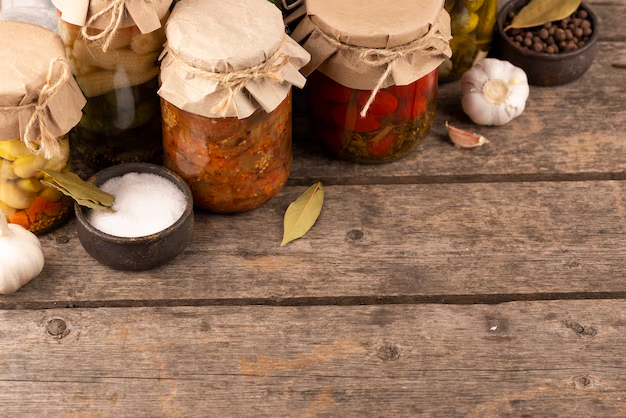How Long Can You Keep Sauerkraut in the Fridge After Opening?
Sauerkraut is a beloved staple in many kitchens, praised for its tangy taste and probiotic benefits. However, its long shelf life often brings up the perennial question: How long does sauerkraut last in the refrigerator after opening? Understanding this can help you make the most of this fermented delight and ensure it retains its best flavor and nutritional value. Let’s delve into this topic, exploring storage tips, shelf life, and signs of spoilage to maximize your sauerkraut experience.
What is Sauerkraut?
Before we talk about storage, it's worth briefly understanding what sauerkraut is. Sauerkraut is finely cut raw cabbage that has been fermented by lactic acid bacteria. This process not only preserves the cabbage but also enhances its digestibility and increases its nutritional profile. The tangy flavor comes from the natural fermentation process, making it a favorite addition to many dishes.
How Long Does Sauerkraut Last After Opening?
Understanding Shelf Life
When it comes to the shelf life of sauerkraut after opening, several factors come into play:
- Refrigerated vs. Unrefrigerated: Unopened, shelf-stable sauerkraut can last for months on your pantry shelf. However, once you open it, it should be refrigerated to maintain its quality.
- Refrigerator Storage: Once opened, sauerkraut can typically last between 4 to 6 months in the refrigerator, provided it's kept under the right conditions.
Proper Storage Techniques
To ensure you get the maximum life out of your sauerkraut:
- Keep it Submerged: Make sure the kraut is fully submerged in its brine. This helps maintain fermentation and prevents the growth of harmful bacteria.
- Use a Tight Seal: Store the sauerkraut in an airtight container to prevent contamination and maintain its crunch and flavor.
- Avoid Cross-Contamination: Use clean utensils every time you dip into the sauerkraut to avoid introducing new bacteria.
Factors Affecting Shelf Life
Several things can influence sauerkraut's longevity once opened:
- Type of Sauerkraut: Homemade sauerkraut might last differently than store-bought due to variations in fermentation and storage conditions.
- Temperature Consistency: Fluctuations in refrigerator temperature can shorten the shelf life, so consistent refrigeration is key.
- Exposure to Air: More exposure can lead to spoilage, so ensure it’s tightly sealed and submerged.
Identifying Spoiled Sauerkraut
Even with the best practices, it’s critical to recognize signs of spoilage:
- Foul Smell: Sauerkraut should smell tangy but pleasant. A strong, putrid odor is a red flag.
- Off Color: Discolored sauerkraut might indicate it's gone bad. Look for pink or brownish hues as warnings.
- Mold Growth: While white sediment in the brine is normal, any mold formation on the kraut itself signals spoilage.
- Texture Changes: If the kraut becomes slimy instead of crunchy, it’s best to discard it.
Health Benefits and Culinary Uses
Nutritional Profile
Sauerkraut isn’t just tasty—it's a powerhouse of nutrients:
- Probiotics: Supports a healthy gut microbiome, aiding digestion.
- Vitamin C and K: Offers immune and bone health benefits.
- Low in Calories: Makes for a healthy and waistline-friendly addition to meals.
Culinary Applications
Sauerkraut’s versatility in the kitchen is vast:
- Topping: Use it on sandwiches, hot dogs, or salads for a crunchy burst of flavor.
- Side Dish: Pair with meats or sausages to complement rich flavors.
- Mix-in: Stir into soups or casseroles for added zing.
Tips for Making Sauerkraut Last Longer
- Freezing: While freezing can affect texture, it extends shelf life if you have a large quantity. Thaw in the fridge.
- Vacuum Sealing: Consider vacuum-sealing portions to limit air exposure.
- Batch Preparation: If making homemade, prepare smaller batches to avoid waste.
Summary and Practical Takeaways
📝 Keeping Your Sauerkraut Fresh
Here’s a quick guide to ensure your sauerkraut stays delicious and lasts as long as possible:
- Seal it Tight: Always use an airtight container.
- Keep it Cool: Store at a consistent refrigerator temperature.
- Stay Submerged: Ensure the kraut remains under its brine.
- Check for Spoilage: Be vigilant about smell, color, and texture changes.
- Use Clean Utensils: Avoid cross-contaminating your jar of sauerkraut.
By following these guidelines, you can enjoy your sauerkraut safely and deliciously for weeks, adding its unique flavor and health benefits to your diet without worrying about spoilage. Understanding how to store and maintain sauerkraut will not only prevent food waste but also keep your meals exciting and nutritious. So, next time you pop open a jar, rest assured that with proper care, your sauerkraut will stay fresh and flavorful.
